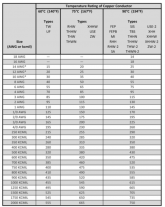240.4 Protection of Conductors. Conductors, other than flexible cords, flexible cables, and fixture wires, shall be protected against overcurrent in accordance with their ampacities specified in 310.15, unless otherwise permitted or required in 240.4(A) through (G).
(
A) Power Loss Hazard. Conductor overload protection shall not be required where the interruption of the circuit would create a hazard, such as in a material-handling magnet circuit or fire pump circuit. Short-circuit protection shall be provided.
FPN: See NFPA 20-2007, Standard for the Installation of Stationary Pumps for Fire Protection.
(B) Devices Rated 800 Amperes or Less. The next higher standard overcurrent device rating (above the ampacity of the conductors being protected) shall be permitted to be used, provided all of the following conditions are met:
(1) The conductors being protected are not part of a multioutlet branch circuit supplying receptacles for cordand-plug-connected portable loads.
(2) The ampacity of the conductors does not correspond with the standard ampere rating of a fuse or a circuit breaker without overload trip adjustments above its rating (but that shall be permitted to have other trip or rating adjustments).
(3) The next higher standard rating selected does not exceed 800 amperes.
(C) Devices Rated over 800 Amperes. Where the overcurrent device is rated over 800 amperes, the ampacity of the conductors it protects shall be equal to or greater than the rating of the overcurrent
(D) Small Conductors. Unless specifically permitted in 240.4(E) or (G), the overcurrent protection shall not exceed that required by (D)(1) through (D)(7) after any correction factors for ambient temperature and number of conductors have been applied.
(1) 18 AWG Copper. 7 amperes, provided all the following conditions are met:
(1) Continuous loads do not exceed 5.6 amperes.
(2) Overcurrent protection is provided by one of the following:
a. Branch-circuit-rated circuit breakers listed and
marked for use with 18 AWG copper wire
b. Branch-circuit-rated fuses listed and marked for use
with 18 AWG copper wire
c. Class CC, Class J, or Class T fuses
(2) 16 AWG Copper. 10 amperes, provided all the following
conditions are met:
(1) Continuous loads do not exceed 8 amperes.
(2) Overcurrent protection is provided by one of the following:
a. Branch-circuit-rated circuit breakers listed and
marked for use with 16 AWG copper wire
b. Branch-circuit-rated fuses listed and marked for use
with 16 AWG copper wire
c. Class CC, Class J, or Class T fuses
(3) 14 AWG Copper. 15 amperes
(4) 12 AWG Aluminum and Copper-Clad Aluminum. 15 amperes
(5) 12 AWG Copper. 20 amperes
(6) 10 AWG Aluminum and Copper-Clad Aluminum. 25 amperes
(7) 10 AWG Copper. 30 amperes
(E) Tap Conductors. Tap conductors shall be permitted to be protected against overcurrent in accordance with the following:
(1) 210.19(A)(3) and (A)(4), Household Ranges and Cooking Appliances and Other Loads
(2) 240.5(B)(2), Fixture Wire
(3) 240.21, Location in Circuit
(4) 368.17(B), Reduction in Ampacity Size of Busway
(5) 368.17(C), Feeder or Branch Circuits (busway taps)
(6) 430.53(D), Single Motor Taps
(F) Transformer Secondary Conductors. Single-phase (other than 2-wire) and multiphase (other than delta-delta, 3-wire) transformer secondary conductors shall not be considered to be protected by the primary overcurrent protective device. Conductors supplied by the secondary side of a
single-phase transformer having a 2-wire (single-voltage) secondary, or a three-phase, delta-delta connected transformer having a 3-wire (single-voltage) secondary, shall be permitted to be protected by overcurrent protection provided on the primary (supply) side of the transformer, provided this protection is in accordance with 450.3 and does not exceed the value determined by multiplying the device defined in 240.6.
(G) Overcurrent Protection for Specific Conductor Applications.
Overcurrent protection for the specific conductors shall be permitted to be provided as referenced in Table 240.4(G)



